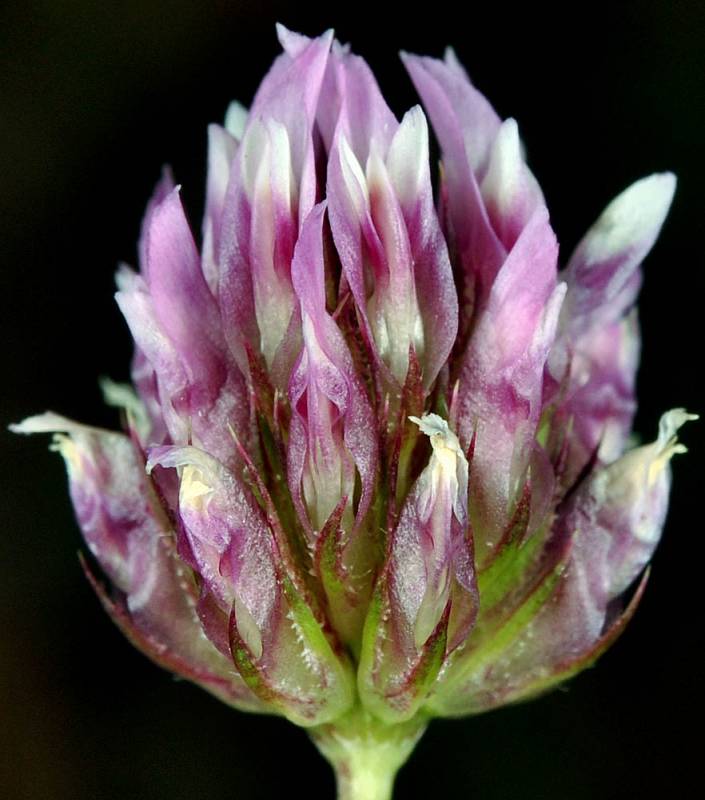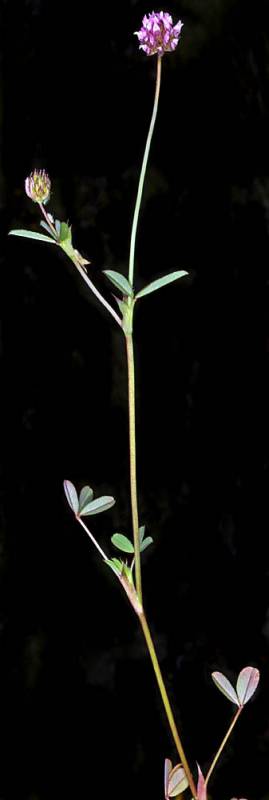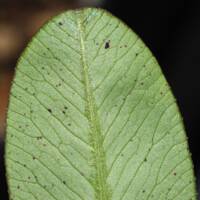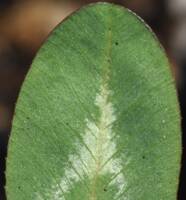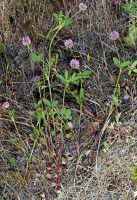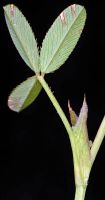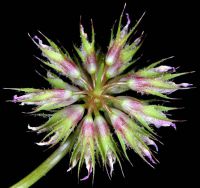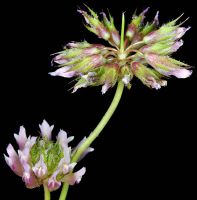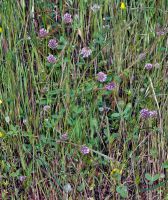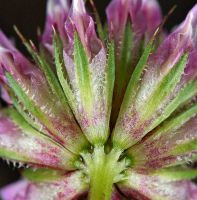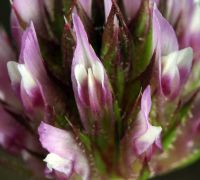Distribution: Occurring east of the Cascades crest in south-central Washington; south-central Washington to California.
Habitat: Wet meadows to rather dry, sandy soil.
Flowers: April-June
Origin: Native
Growth Duration: Annual
Conservation Status: Not of concern
Pollination: Bumblebees, bees, butterflies, flies
Mostly glabrous annual with several decumbent to erect stems 1.5-5 dm. long.
Leaves alternate, trifoliate; stipules 1-2.5 cm. long, with entire, acuminate tips; leaflets oblong-elliptic to oblanceolate or broader, 1-3.5 cm. long, finely denticulate the entire length, the teeth needle-like.
Inflorescence of 10- to 50-flowered heads, the heads axillary as well as terminal, 1-2 cm. long, subglobose, without an involucre; flowers white to purplish, 6-12 mm. long, erect but becoming reflexed as the pedicles elongate to up to 6 mm.; calyx glabrous, about equal to the corolla, the tube 10-veined, the 5 teeth fringed, 2-3 times as long as the tube, the upper 2 much the longest.
Pod 1-seeded
Publication: Pl. Hartw. 304 [1849]. 1848.
PNW Herbaria: Specimen records of Trifolium ciliolatum in the Consortium of Pacific Northwest Herbaria database
WA Flora Checklist: Trifolium ciliolatum checklist entry
OregonFlora: Trifolium ciliolatum information
E-Flora BC: Trifolium ciliolatum atlas page
CalPhotos: Trifolium ciliolatum photos

